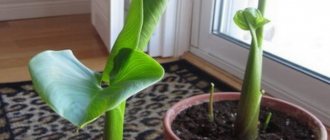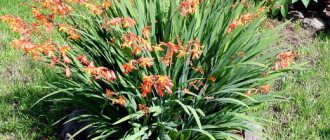Useful properties of tagetes
The plant is valued not only for its attractive decorative appearance, but is also used in cooking, medicine and as a soil disinfectant.
Dried flowers in cooking are often used as a spice - Imeretian saffron; it is added to food and pickles to give a specific aroma. Dried flowers are an excellent natural coloring for cheeses and other products.
In Latin America, the leaves of the plant are valued; they are used to prepare decoctions that help with constipation, fever, and also as a diuretic and diaphoretic, which causes vomiting when drunk in excess.
In floriculture, tagetes allows you to get rid of fungi and disinfect the soil. It is recommended to plant it together or next to the following plants:
- Aster.
- Sweet pea.
- Strawberries.
- Most garden crops (potatoes, tomatoes).
By fencing a plot of land with plantings, you can neutralize crops from fungi and pests. The Colorado potato beetle does not like marigolds very much; if you plant flowers alternating with potatoes, you can reduce the number of harmful insects on the leaves of the root crop.
To enrich and neutralize the soil in the fall, the site is dug up along with the crushed plant.
Types of marigolds
Professional gardeners know almost 60 species of marigolds. Of these, only three are considered the most popular in our area: erect, deflected and thin-leaved. In America, they not only decorate garden beds, but are also used in medicine. In some countries, they are used to make a popular seasoning - Imeretian saffron (the leaves have a specific spicy fragrant aroma).
Flowers, by analogy with chamomile, can be simple, semi-double or double, similar to carnations. The dark green leaves are no less beautiful than the flowers, which can stand in water for a long time when cut.
African marigold (Tagetes erecta)
The plant is annual. The bush has a clearly defined main shoot and can be compact or spreading. The stems are strongly branched, up to 1.2 m high, branched, finely ribbed with large inflorescences-baskets up to 13 cm in diameter on long peduncles. The inflorescences are single-color yellow or two-color. Blooms in late June - early July.
French rejected marigolds, small-flowered (Taget es patula)
An annual plant with a straight branched stem, linear-lanceolate, pointed-serrate leaves. The heads of the inflorescences are of medium size and sit on thickened stalks. The leaves grow together. Blooms in the second half of July.
Mexican marigold (Tagetes tenuifolia)
Annual, low compact bush 20-40 cm high, densely branched with small leaves. Small baskets of inflorescences are simple, sit on short peduncles, collected in corymbose inflorescences of yellow or yellow-orange shades.
Aniseed marigold (Tagetes anisala)
The stem, leaves and flowers have the smell and taste of tarragon, but it is much more pleasant and stronger. The aroma can be heard even at a considerable distance. Blooms profusely all summer. Good for any type of flower garden, even with limited soil. Unpretentious, drought-resistant, but loves warmth. Even in bloom, it can easily tolerate transplantation.
There are many more varieties of marigolds with different colors, doubleness and sizes of plants and flowers. For example, variety "Harlequin" :
Care when growing in open ground
Plum growing tips and best varieties
Marigold flowers planting and care in open ground photo
Plants do not require special care and do not require special costs or effort. However, perhaps, like all cultivated plants, watering and weeding from weeds and soil cultivation in the form of loosening are required.
How to water
Watering is necessary in moderation, but you cannot do without it, otherwise your flowerbed will be covered with dried brooms, only the tops of which will retain a fresh look. Especially if it's a hot summer. Don’t just rely on rain, water at least once every three days, remembering to loosen the soil after watering to conserve moisture. Simultaneously with watering, you can fertilize by diluting mineral and organic fertilizers in the water.
In summer, when the weather is hot, to prevent crust formation on the ground, watering is best done in the morning or evening after sunset. If watering is carried out during the day, then it is necessary to loosen the top layer of soil.
Foliar and root feeding
If the soil is prepared correctly before planting, then marigolds do not need additional feeding. If it is clear from the plant that development is rather weak, you can fertilize the leaves with complex fertilizers.
The use of fresh organic matter is not recommended. It is better to ferment the same grass or manure for a couple of weeks and dilute it with water in a ratio of 1:10, pouring a liter of solution under each bush.
It must be remembered that an overdose of fertilizers has a harmful effect on plant growth. Mineral fertilizers are applied the first time during the period of intensive plant growth, the second time when the first buds appear, and the third time before flowering begins.
Formation of bushes
Very rarely does anyone bother with this. However, if you have time, you can give the marigolds a beautiful shape. Prune some additional branches from the main stem. This procedure will significantly improve the nutrition of the remaining buds. The optimal time for pruning is summer, when the buds are already blooming. Buds with signs of any diseases, small or wilted, are also cut off. After the bush is formed, the appearance of new additional branches of the stem stops.
Collecting seeds
For planting next year, it is enough to use seeds that can be collected from flowers grown on the site. To do this, just choose a bright and healthy bush, let it ripen completely, then cut off the buds and dry them. After which the seeds will easily separate and can be stored in a paper bag. When using this method, it is necessary to take into account that this will not affect the health of the plant itself, but you can get a different color of the baskets, different from the mother one.
Rules of care
The best varieties of strawberries
Marigolds are regulars in city flower beds and country flower beds. They are guaranteed to bloom, combining either with the summer sun or with the autumn foliage. The website flowery-blog.ru will tell you how to grow them.
Marigolds planting
Marigolds are grown from seeds in two ways: direct sowing in open ground and seedlings. It is believed that the seedling method produces stronger and earlier flowering plants. So, planted as seedlings in February, they will delight you with their first flowering by the beginning of May. To do this, marigold seeds are sown in boxes under film, without deepening, in late February - early March, kept in moderate light in a warm room. Already on the 7-10th day, shoots may appear; after the second pair of true leaves, they are picked into separate cups, and planted in the ground with buds in May-June.
Marigold flowers sprout vigorously even when planted directly into the ground in spring! The right time for planting is the end of May-beginning of June, during the flowering of the bulbous plants. The brightest colors will form in full sun, so choose a sunny area with loose soil. Tagetes can go without water for a long time, but they do not tolerate stagnant moisture!
For marigolds, the planting distance is not critical; you can create a dense flower bed, you can leave several plants, or even better, combine different types of marigolds so that they complement each other. Thus, thin-leaved varieties bloom 40-50 days after planting seeds, rejected varieties bloom on 30-40 days, and upright marigolds will have to wait the longest for flowering - 50-60 days after sowing.
Chernobrivtsy look more lush on fertile soils, so you can dilute the soil in advance with organic matter - compost or humus. Organic fertilizers for plants. The seeds are not planted deep into the soil; it is enough to lightly sprinkle them with soil. The shoots that appear after two weeks can be thinned out at your discretion. Marigold flowers will get along with any plants in a flower bed; they can be planted along the beds to protect more demanding crops from pests and diseases. The flowering of marigolds can last until the first cold weather, and the seeds for subsequent cultivation are collected after they have completely dried.
photo by the author
Marigold care
Unlike their “neighbors” in the flowerbed, marigolds can take care of themselves! Therefore, caring for them is extremely simple. Plants actively store up moisture on the eve of flowering; during this period they are watered regularly, and after watering is reduced to avoid stagnation of moisture at the roots. To make the bush bloom more luxuriantly, you can remove faded buds to make it look neater - thin out the dried leaves.
On nutritious soils, marigold flowers can do without additional fertilizing. On poor soils, fertilizers will make the flowering period more picturesque and longer. All fertilizing is carried out before flowering, when the plant reserves strength! You can use complex mineral mixtures or organic components. Minerals for the flower garden at the dacha. Fertilizing is carried out no earlier than the seedlings reach 10 cm, and no later than the buds open.
If different varieties are in close proximity, the resulting seeds may lose their specific characteristics, but you will have the opportunity to grow your own unique variety. Typically, flowerbeds with marigolds do not require weeding, because dense thickets do not allow weeds to multiply, but in wet weather, too thick plantings can cause root rot.
Marigold seedlings
Juniper virginia description, best varieties
If you want to achieve earlier flowering, it is better to plant marigolds as seedlings. To do this, it is better to sow the seeds in a container early in the spring. For marigolds, growing seedlings is not a complicated process.
When sowing, it is necessary to take into account different sowing times.
In the first half of March, upright ones are planted, and in April, low-growing ones. Planting seeds is not difficult, you just need to provide the marigolds with care after sowing.
The composition of the soil should include peat, sand, humus and turf, all in a one to one proportion. Before sowing, the soil is disinfected with a manganese solution. Don't forget to place drainage at the bottom of the container.
When sowing seeds in a container, try to maintain a distance of about 2 cm, moderate constant watering and a temperature of about 23 degrees.
Watering is done from a sprayer. After the first shoots, and this is approximately the fourth day, if the seeds are fresh, and if the seeds are stale, then the shoots will appear somewhere on the seventh day. We move the container to a cool but bright place.
- Marigolds do not tolerate temperature drops below 10 degrees, they slow down growth and may stop flowering.
- If the marigold seedlings have stretched out, what should you do? In this case, you need to plant them a little deeper into the ground.
- Is it necessary to pinch the plant? Under no circumstances should you do this, since the plant will be late in flowering for a considerable time.
Features of care
Tagetes, or marigolds, are resistant to various weather conditions and are not picky about the soil. But still, on fertile soil they develop much faster. Therefore, to ensure strong plants and outstanding flowering, add a mixture of humus, peat and sand to the soil before planting in a ratio of 1:1:0.5. Tagetes can grow and develop normally without fertilizing, but for lush flowering they need to be fed with nitrogen or organic fertilizers.
Although marigolds are considered drought-resistant, if there is a lack of moisture, the inflorescences become smaller, and the plants themselves become unsightly and weak. To avoid this, they need to be well watered during growth. But try not to overwater, and as soon as they begin to bloom massively, it is better to reduce watering, otherwise the plants will begin to rot from excess moisture. If the weather is very hot, the crop can be watered every day. Some experts believe that evening is the optimal time for this. But tagetes are susceptible to rot, and evening watering - when the temperature drops and air humidity rises - can contribute to the formation of fungal spores. In addition, if you water and spray flowers during the day, they do not lose turgor and do not overheat from lack of moisture. After watering, it is better to loosen the soil around the plants; it is not for nothing that loosening is also called dry watering. After this procedure, the connection between the lower layers of the soil and its surface is broken, and the moisture remains in the soil until the capillary tubes are restored. In addition, loosening enriches the soil with oxygen and helps maintain stable moisture in it.
After the bushes grow and begin to actively bloom, watering is reduced and fertilizing is stopped altogether (the exception is the so-called erecta).
To make care easier, the soil around the tagetes can be mulched with a 5 cm layer of dried grass. This way you will reduce the number of weeds, help retain moisture in the soil and enrich it with nutrients and carbon dioxide - the main source of carbon nutrition for the plant.
Most root rots and pathogens of diseases such as fusarium are a scourge of marigolds. They live in the soil and do not touch the crop as long as there are plant remains for their nutrition. As soon as the decaying mass becomes small, they switch to flowers. By covering the surface with mulch, we supply the soil with these residues.
Caring for French Marigolds
Rejected marigolds are hardy plants that require minimal care. In order for the bushes to have dense foliage and lush, long-lasting flowering, they will need watering, fertilizing and weeding.
Landing place
Plants need loose, fertile soil with a neutral pH level. The addition of peat and sand can improve its structure. Adding mineral fertilizers enriches the soil with essential microelements. The planting location depends on the height of the bush. French Tagetes includes medium and low-growing varieties. It is planted in the center of flower beds, along borders, in garden boxes, and large pots.
Agrotechnics of cultivation
Tagetes is unpretentious, grows and blooms in almost any conditions, but with good care the bushes look much more decorative. It is grown in two ways - seedlings and sowing seeds in the ground.
A non-seedling method for growing marigolds
Marigolds are grown by sowing seeds in the ground at different times:
- Before winter, after the onset of stable minus. They form ridges in advance, make grooves and store some soil in a warm place. Seeds are sown in dry soil and sprinkled with stored soil. The top is mulched with rotted sawdust, compost, and leaf litter. In the spring, when the last frosts have passed, the mulch is raked so that the soil warms up faster.
- In the spring, in mid-April - early May, marigolds are sown on insulated beds or greenhouses. After sowing, the furrows are shed with warm water.
In early - mid-May, tagetes are sown directly into the ground in a permanent place. The emerging seedlings are thinned out, leaving at least 10 cm between plants. When several true leaves appear on the seedlings, they are planted at a distance of 30–40 cm.
How to grow marigold seedlings in a greenhouse
Marigolds from seeds are successfully grown in a greenhouse. The planting time comes when weather forecasters no longer promise a drop in night temperatures below –1–3°C. The soil in the greenhouse quickly thaws already in the first warm days of April.
Shoots appear in a week. Caring for marigold seedlings involves regular watering with warm water, loosening and weeding. If the soil has been prepared in advance, young plants do not need separate fertilizing. If necessary (weak growth, yellowing of leaves), foliar spraying is carried out with a 1–3% urea solution. By mid-May, the seedlings are ready to be transplanted into open ground.
How to grow marigold seedlings at home
The soil for sowing marigolds is prepared in the following proportions:
- 1 part compost;
- 1 part peat;
- 1 part of garden land;
- 0.5 parts sand.
A drainage layer is poured onto the bottom of the container - broken brick, expanded clay, coarse sand. Then - the prepared soil mixture. It is lightly compacted and watered. You can add a drug against fungal diseases to the water for irrigation, since Tagetes seedlings often suffer from blackleg. After a few days, when the soil settles and is evenly saturated with moisture, make grooves and place marigold seeds in them.
Sprinkle soil on top and moisten a little more. The pots are covered with glass or film and placed in a warm, bright place. The covering is regularly removed for ventilation. After the first shoots appear, the film is removed and the containers are moved to a sunny place. Until the seedlings have their first true leaves, water very sparingly to prevent blackleg disease.
Planting seedlings in open ground
The optimal distance between plants when planting marigold seedlings in open ground is 0.4–0.5 m for upright varieties. Low-growing ones can be planted a little more often. The place should be sunny, without stagnant air.
Plants are transplanted together with a lump of earth. Before planting, marigolds should be watered so that the roots do not dry out during transplantation. It is advisable to prepare the place for the future flower bed in the fall - add phosphorus-potassium fertilizers, ash and dig it up. When planting seedlings in the ground, add compost, urea or saltpeter under each root. But you shouldn’t be overzealous with nitrogen so that the plants don’t get fat, that is, they don’t build up green mass to the detriment of flowering. Marigolds will greatly benefit from spraying with a solution of microfertilizers for flowers. This is done after the plants have taken root, started to grow and begin to form buds.
Caring for tagetes in open ground
Marigolds are moisture-loving, but do not like prolonged stagnation of water. Therefore, watering should be moderate. After watering, the soil must be loosened. For abundant flowering, flowers are fed several times a season with an infusion of mullein or liquid fertilizer made from nettles and other weeds.
Diseases, treatment and prevention
Due to the content of phytoncides, marigolds are less susceptible to diseases than other crops. However, unsuitable conditions for them can cause gray mold and spider mite infestation. Specimens infected with rot are destroyed, healthy ones are reduced in watering, and sprayed with anti-fungal preparations. For spider mites, Tagetes are treated with an infusion of garlic, wormwood, red pepper or tobacco dust. In case of severe damage, plants are sprayed with solutions of the preparations “Aktellik”, “Fufanon”, “Antiklesch”, “Fitoverm”.
Growing rejected tagetes
Planting rejected marigolds is done in two ways:
- sowing in open ground;
- growing seedlings with subsequent transplantation.
Both methods allow you to decorate your area with bright flowers, but in the first case you will have to wait until mid-summer for their appearance.
Attention. The optimal temperature for young seedlings is 20-22°. At 10° the development of flowers stops, negative temperatures destroy tagetes.
Planting in open ground
Rejected marigolds of double varieties can be planted in open ground no earlier than May. By this time, frosts dangerous for the sprouts have passed. The seeds are evenly laid out in grooves up to 5 cm deep and watered abundantly. Shoots will appear in 7-10 days.
Information. For the first planting, material is purchased in a specialized store. Then you can collect seeds from your flowers.
Propagation of flowers by seeds
They start growing Tagetes seedlings in March or April. French marigolds bloom early, 40 days after sprouting. The substrate for seedlings consists of several components:
The result is loose and light soil in which seeds quickly germinate. The container must have holes to drain excess water. A drainage layer of fine crushed stone or expanded clay must be poured onto the bottom of the container. To disinfect the soil, it is spilled with a solution of fungicide or potassium permanganate. Several grooves up to 1.5 cm deep are made at a distance of 2 cm from each other. The seed material is distributed along the groove and covered with soil. Watering is done carefully so as not to wash away the crops. The top of the container is covered with film.
The seedlings are ready for planting in a month
Advice. It is not necessary to make furrows under the Tegetes seeds; it is enough to spread them on the surface and sprinkle them with soil.
The optimal temperature for germination is 22-25°. In such conditions, seedlings appear in 3-4 days. After 14 days, the seedlings dive. At the beginning of June they are planted in a permanent place. Depending on the height of the plants, a distance of 15-25 cm is left between seedlings. Watering is required. Periodically loosen the soil and weed out weeds. Timely removal of wilted inflorescences will help prolong flowering and maintain decorative appearance.
Planting marigold seedlings in open ground
How to plant marigolds in open ground correctly
It's very simple:
We prepare shallow holes so that the lump of earth fits completely into them. You can pre-water it and put a handful of humus on the bottom. Carefully release the seedlings from the cups and place them vertically, covering them with soil. We water so that the soil subsides, but the water does not stagnate. You can immediately mulch the surface with what you have on hand. These could be last year's leaves, fresh grass, hay or pine needles from the forest. The distance between the holes depends on the selected variety
For low-growing varieties, 10-15 cm is enough; for medium- and tall-growing varieties, leave more space, about 30-40 cm.
Chaotic plantings look original, creating a simple naturalness. We have all long been accustomed to rows; they look boring and familiar. Create a composition, for example, by planting petunias in the foreground and blackberry in the background.
Marigolds in landscape design photo
Marigolds look very beautiful in compositions with ageratum
To decorate a personal plot or flower bed, these flowers can be used in a wide variety of combinations.
Petunia and marigolds look beautiful photo
This is all the more pleasant, because: ease of care, various bright colors, differences in growth height, abundance of color, long flowering period can be used almost unlimitedly.
Beautiful marigolds photo compositions
Marigolds are great in single and combined plantings; they are planted in parks, on the borders of walkways, and in flowerpots for various recreation areas. They decorate balconies and loggias or even billboards and facade walls of houses.
Marigolds in the garden photo flower beds
Marigolds medicinal properties and contraindications
- Marigold oil is used in the treatment of burns and skin diseases. To do this, you need to infuse marigold flowers with vegetable oil in a ratio of 1:10.
- Only picked marigold flowers should be eaten in salads; they help restore vision and prevent eye diseases, this applies to programmers and those who spend a lot of time near the monitor.
- A decoction of marigolds is used to treat diseases of arthrosis of the joints. For one glass of boiled water about 25 grams. dried flowers, infused and taken orally. You can take up to two liters per day.
- In cosmetology it is used as a lip balm. To prepare it you need to take about 15g of almond oil. 25 dry marigold inflorescences and about 45 gr. almond oil, mix and leave for about two weeks, and everything is ready for use.
- In cooking, marigolds are used as a seasoning, an additive to soups, added to salads, where they add some spice and individual taste, and when preserving cucumbers, they add it to brine.
Contraindications - essential oils are not recommended for use by pregnant women and people with individual intolerances, as they can cause allergic reactions. And so in general, there are no contraindications for use.
Applications of marigolds
The leaves and flowers of Tagetes contain mobile yellow essential oil. It is extracted from plants and used in the perfumery, cosmetics and food industries. The healing properties of flowers help get rid of stomatitis, bronchitis, asthma, and prevent cataracts. To relieve tension from stress, it is recommended to take a bath with marigold decoction.
In cooking
Fragrant plants are often eaten. Tagetes is a popular spice in the cuisine of Mexico and Europe. Dried and ground flowers are added to soup and main courses. Marigolds are used to flavor and color alcohol.
In the garden
Many pests cannot tolerate the smell of tagetes: cabbage whiteflies, onion flies, mole crickets, and Colorado potato beetles. If you plant flowers around the perimeter of the garden and between the rows of vegetables, the harvest will be protected. Marigold roots can rid the soil of nematodes. The special fungicidal properties of plants help disinfect the soil and prevent the appearance of rot.
Photos of marigold flowers
Marigold flowers, photo of the Antigua Orange variety. General description of the plant: straight stems from 20 to 130 cm high, fibrous root system, pinnately dissected leaves, from light to dark green.
Flower baskets of different colors: orange, yellow, brown. In the middle the flowers are tubular, at the edges they are false-ligulate.
They bloom very abundantly: from June until the first frost. The fruit is a linear achene. The seeds give abundant self-sowing. Their germination period is 3-4 years. The spicy strong smell comes not so much from the flowers as from the leaves.
A flower bed of these flowers is a home pharmacy: their medicinal properties are also known from legends and traditions, which are now confirmed by scientific research. Marigolds not only provide aesthetic pleasure, but also serve for healing.
Many diseases can be alleviated and helped to be cured with decoctions and infusions of marigolds. For example, cataracts, diabetes, pancreatic inflammation, colds, stomatitis, bronchitis.
Photo of a flowerbed of marigolds
If you add a decoction of flowers to your bath, you can relieve anxiety and stress. In South America, the plant has long been used as a seasoning, for sauces, marinades, and for baking.
In the Caucasus they sell a seasoning for soups and pilaf, which is called “Imereti saffron”. These are nothing more than dried marigold flowers. If you add plant leaves to the marinade, the vegetables will become elastic and aromatic. In France they are grown on a large scale.
These plants are unpretentious and even a beginner can grow them. Buy seedlings or plant an already flowering bush in a flowerbed or in a pot on the balcony. In May they are sown directly into the ground, just make a furrow and water it.
When the shoots appear after two weeks, wait until a few leaves form and plant more freely.
Lush flowering will be in an open sunny place. Water well before the flowers appear, then less often. Fertilize moderately: when they grow to 10 cm, and when there are buds.
We present to you popular types of bright annuals. The marigolds, photos of which you will see, are called French. Their homeland is Mexico, the mountain slopes of this southern country. French marigolds, photo of flowers will help you recognize them in the flower beds of cities and parks. The inflorescences are small and the bushes are of medium height.
They are unpretentious and grow well in different soils. Marigolds bloom even with a small amount of soil, so they can grow not only in flower beds, but also in pots, flowerpots near houses and in parks.
Variety Vilmorin. Graceful marigold flowers, the photo shows small bushes up to 26 cm. Interesting inflorescences like lovely bows. The color is bright and rich.
Gold Bol - the marigold flowers in the photo have a rich yellow tint. They are large in diameter up to 6 cm and terry. Bright green stems with lush inflorescences look great in bouquets and keep well in vases.
The most popular varieties: names, descriptions, photos
Breeders have created a large number of varieties and hybrids. There are some that deserve close attention. They deserve it for their unpretentiousness, beauty and long flowering for several months. Check out the descriptions and photos of the most famous varieties of Tagetes - thin-leaved and erect, white, orange and others.
Taishan
Shoots of small bushes 30 cm high end in large double flowers up to 10 cm in diameter in a lemon, orange or golden hue. It blooms by the end of June and lasts until the October frosts. The plant is very resistant to adverse weather conditions. The variety is used for growing in flowerpots, decorating flowerbed borders, and balcony boxes.
Antigua
The variety belongs to the upright compact marigolds. The stem height is up to 30 cm. The leaf blade has an elongated shape. A double inflorescence up to 12 cm in diameter is painted in all shades of yellow and orange. The most popular variety in landscape gardening. With timely harvesting of faded buds, the flowering period is extended, lasting until frost.
Kilimanjaro
The erect stems are covered with openwork, carved foliage. The creamy-white double inflorescence, up to 12 cm in diameter, has a different, darker center. Flowering lasts until frost. Tagetes (Tagetes anisala) is a Mexican native who came to our estates as a spicy-aromatic plant, with an aroma and taste reminiscent of tarragon. Flowering is abundant.
Eskimo
A hybrid of Tagetes with unusual shades grows only 25 cm tall. A cream-colored inflorescence with a diameter of 6 cm blooms in July. Flowering is long-lasting, until October frosts. The hybrid is adapted to growing in sparse partial shade. Recommended for planting in borders and flower beds. A popular variety for cutting into bouquets that last for a long time.
We invite you to watch a video about Eskimo marigolds:
Carmen
The variety belongs to the variety of rejected marigolds. A bush up to 30 cm high is dotted with double flowers, the yellow center of which is framed by fiery red petals. Shows its best qualities when planted on fertile soil. Loves moisture in the first half of its life, then is more drought-resistant. Loves sunny areas, but can also grow in partial shade. This variety is used to decorate flower beds, ridges, and borders. It dies at the first frost.
We invite you to watch a video about the Carmen marigold variety:
Lulu
A neat small-flowered bush grows up to 30 cm high. Numerous side shoots give the plant an openwork appearance. Tagetes is strewn with small flowers with a diameter of no more than 3 mm. Depending on the variety, they can be lemon-colored (Lemon Lulu) or dark yellow with a brown edging (Mexican Lulu). The plant loses its decorative effect even when the temperature drops to +1°C.
Vanilla
A hybrid of a medium-sized plant up to 70 cm high has appeared recently. Very large inflorescences with a diameter of up to 12 cm are surrounded by openwork foliage of a lush green hue. The flowers are delicate ivory shades with lemon-cream shading towards the center. Flowering is long - from June to September.
We invite you to watch a video about Vanilla marigolds:
Bonanza
The variety belongs to rejected marigolds. The height of the spherical bush is 25-30 cm and almost the same in diameter. Orange double flowers with red speckles are open from May to September. This is the fastest flowering marigold variety. Compared to other varieties, it is noticeably resistant to adverse weather conditions. Unpretentious when landscaping urban areas and borders. Flowers cut into bouquets do not lose their beauty for a long time.
Bolero
Rejected marigolds are 30 cm high with flowers in yellow-red-brown shades. The variety is distinguished by its rapid entry into flowering ; literally 1.5 months pass from sowing to flower blooming. A drought-resistant variety, it likes to be planted in a sunny place, but easily adapts to growing in partial shade. Needs well-drained soils without stagnant moisture.
Durango
Anemone-like marigolds are 25-30 cm high. The bush is a ball with a diameter of up to 20 cm. Double flowers of a fiery red color are located on strong peduncles. The variety is perfect for arranging borders, ridges, and various flower beds.
Mimimix
The plant, up to 25 cm high, is completely strewn with miniature inflorescences. Neat, dense bushes of a spherical shape, grow due to well-branched stems. The red and yellow flowers bloom continuously from July to September. An ideal variety for planting in flowerpots and flowerpots.
It is useful for flower growers to know the following nuances of growing marigolds: at what time to plant these flowers, how to grow them from seeds, what soil to choose and what to feed them, how to deal with diseases, including drying out of the plant, as well as pests.
Marigolds are so popular that breeders continue to create more and more new varieties and hybrids that satisfy the taste of the most partial connoisseur. Depending on their appearance, they can be tall or low, erect and dotted with a huge number of peduncles. For your plot or balcony it is very easy to choose a variety that will be able to become anything for many years.
If you find an error, please select a piece of text and press Ctrl+Enter.
Conditions for growing marigolds
Absolutely all types of marigolds can be successfully grown at home. But in order to achieve abundant and long flowering and lush branching in the bushes, they require proper care.
Since this plant is native to the tropical regions of Mexico and America, it requires a sunny area for planting. It is in such a place that marigolds will give you lush blooms. These flowers require a warm climate. At the first frost they simply die. At low temperatures, their growth slows down and the leaves become pale in color.
A temperature of 20-23 degrees is the most ideal for the full growth and flowering of marigolds.
Successful growth of bushes occurs in all types of soil. But if they are planted in well-drained and nutritious soil, the plants will respond positively. Planting marigolds on acidic, heavy soils with stagnant water is strictly prohibited. In such conditions, the root system rots very quickly.
Young plants need to be watered frequently to ensure rapid growth of the bush and abundant branching. Adult marigolds need moderate watering, as they tolerate drought quite well. Only complex substances can be used for fertilizer. Nitrogen fertilizers stimulate growth but inhibit flowering. Fertilizing is applied 1-2 times a month. Varieties grown in containers need feeding no more than once every two weeks.
Weeding marigolds, removing faded buds on them, as well as preparing seeds are the main conditions for caring for them. Seeds are collected from well-ripened plants and only in dry weather. It should also be noted that tall species need support to be formed so that they do not break. During the period of the first frosts in spring and autumn, plants should be covered with covering material. If you want your pets to delight you after the end of the season, they can be transplanted into containers and flowerpots, brought indoors and continued to be grown on the windowsill.
Excessive watering and poor soil can lead to blackleg. To do this, the soil should be treated with an antifungal agent. In very dry climates, seedlings may be affected by spider mites. Here it is important to increase air humidity by carrying out regular and frequent spraying. You should also treat it with hot pepper tincture. The procedure must be done 2-3 times. Very rarely, marigolds can be affected by slugs.
Correctly selected varieties of marigolds will allow you to create a beautiful decoration in your garden plot, in any flower garden and on the balcony.
Description of the species
The inflorescences are complex, represented by a very bright basket of yellow, orange, reddish-brown, brown or variegated color. The bud of marigolds is medium in size. They bloom from early June until frost. The fruit is a black, flattened achene. The seeds of this plant can be stored for approximately 4 years. 1 gram contains 280-700 flower seeds.
In decorative floriculture, numerous hybrid varieties and species are used, among which a worthy place is occupied by rejected marigolds, or French marigolds - Tagetes patula L. Their homeland is the mountainous regions of Mexico. The plant is an annual. It has erect stems up to 15-50 cm tall, highly branched at the base, lateral shoots deflected. The leaves are small, pinnately dissected with linear-lanceolate lobes, serrated at the edges, dark green, arranged alternately or oppositely.
The inflorescence is a basket, 4-6 cm in diameter, solitary or in a corymbose inflorescence, cup-shaped, varied in shape, on long peduncles. The involucre of the flower is single-row, consisting of 5-7 fused leaves, pointed at the apex. The flowers are yellow, orange, lemon, brownish-brown or dark red, velvety, often bicolor with different shade ratios. They form a fruit capsule-achene. 1 gram contains about 300-700 seeds. This type of marigold has been used in culture since the beginning of the 16th century.
Numerous varieties of rejected marigolds are divided into groups:
- Tall - up to 60 cm or more in height with simple inflorescences;
- Medium - up to 50 cm high with double inflorescences;
- Low - up to 25-40 cm high with simple or double inflorescences;
- Very low - midgets, 15-20 cm high with simple or double inflorescences.
Differences between deflected and erect
How do rejected marigolds differ from other species, and, above all, upright ones? After all, from the outside they seem very similar and, thanks to their beauty and unpretentiousness, are equally popular among flower growers.
- Firstly, they differ in the structure of the stem. In erect marigolds, it does not branch from the base, but grows straight and even often becomes woody at the base.
- Secondly, only one inflorescence grows on one stem of erect marigolds, while rejected ones can grow a whole bouquet.
- Rejected marigolds are usually small in size and reach a maximum height of 60 cm. And among the erect ones there are real giants, up to 120 cm in height.
- Rejected marigolds are characterized by a wide variety of flower colors - almost all varieties are two-colored. And among the erect ones you can find only monochromatic flowers.
- In terms of diversity of flower shapes, rejected marigolds have also gone far ahead. Among the varieties there are simple, double, and similar to chrysanthemums and anemones. The inflorescences of erect marigolds are all double, looking like a lush ball.
- Finally, these two species differ somewhat in terms of growing season and whimsicality. Rejected marigolds bloom faster and easier and can grow in almost any conditions (in terms of humidity, amount of light and ecology, for example, on the sides of major roads and in polluted regions.)
Classification of marigolds
All varieties of rejected marigolds can be divided into several groups according to flower shape:
- Simple - the inflorescence basket consists of one layer of reed flowers along the edge and tubular flowers in the center.
- Carnation flowers - inflorescences consist mainly of reed flowers; they can be simple, semi-double or double.
- Chrysanthemum-shaped - consist mainly of tubular flowers, usually double.
- Mixed type - when reed flowers are located at the edges, and the middle of the inflorescence is filled with tubular flowers.
Pests and their control
Thanks to its natural properties, the plant not only protects itself from various infectious diseases, but also covers the surrounding area with special essential oils (expressed by a specific smell), which has antiseptic properties. Using this property, gardeners and gardeners plant marigolds next to vegetable beds and greenhouses, or in combination with other flowers.
Slugs and snails
To combat them, you can use special preparations that are purchased in stores, or use an old recipe: sprinkle the edges of the bed, if possible, the entire bed, with dry ash. Having previously collected all the snails and slugs from the beds.
Spider mite
When a spider mite appears, it is best to immediately eliminate the plants to prevent the disease from spreading to other bushes. To prevent the disease, in addition to special medications, you can use folk recipes, for example, a mixture of yarrow with onion infusion.
Gray rot
This disease most often appears in humid weather, when morning fogs set in and the earth does not have time to dry out. If this disease is detected, plants must be removed and burned. the area must be treated with potassium permanganate, or spilled with boiling water, otherwise there will be a risk of infecting all plants and not only marigolds.
Marigold propagation
Tegetes are propagated by seeds. Any method is suitable - both seedless and seedling. When growing without seedlings, the seeds are sown in late May - early June, when the threat of frost has passed. Shoots will appear on the 5-10th day.
The seeds of marigolds are medium in size, so they can be sown in furrows, placing them 1-1.5 cm apart. After emergence, the seedlings are thinned out, otherwise the plants may suffer from a lack of light, water and nutrients.
With the seedling method, the seeds are sown in March, with the exception of the so-called upright: to obtain full-fledged seedlings, its seeds are sown in February. All that is needed is a nutritious substrate consisting of a mixture of peat, humus and sand, moderate temperature (about 18-22°C) and reasonable watering.
Marigold seedlings are susceptible to a disease called “black leg”. To avoid this, ensure good drainage when planting. For this, a mixture of coarse crushed stone, sand and expanded clay is best suited, the optimal layer thickness is 3 cm. If the plantings are thickened, the seedlings need to be pruned. You can begin this procedure as soon as the plant has at least one true leaf. Seedlings should be planted in open ground at the beginning of summer so that they are not damaged by late spring frosts.
It is a little faster to grow heterotic hybrids. Against the background of neat, compact bushes, large caps of inflorescences look impressive. Tagetes hybrids bloom earlier than regular varieties, which means that you can sow seeds for seedlings later.
Tagetes from seeds of heterotic hybrids are grown in the same way as from seeds of conventional varieties. The only, but very significant difference is in the sowing time; for hybrids they are slightly shifted. If you want to have flowering plants by the beginning of summer, the seeds must be sown in mid-to-late April, whereas the seeds of ordinary varieties of T. Erecta had to be sown in February.
But such hybrids have one significant drawback - it is useless to collect seeds from them. Even if you find viable seeds, they are unlikely to grow into anything worthwhile. The second generation of gerotic hybrids loses most of their original qualities (color, shape and size of inflorescences, dimensions of the bush itself). So it is likely that instead of large inflorescences of unusual color, you will get ordinary red tagetes with small flowers, which can be found in every second garden. Therefore, heterotic hybrids should initially be treated as a pleasure for one season.
All faded marigold inflorescences must be removed, in this way you will not only preserve the decorative appearance of the plant, but also stimulate further flowering. In addition, with prolonged damp weather, the inflorescences of Tagetes, especially the densely double varieties, begin to rot. It is difficult to protect a plant from this weather scourge; it is, of course, possible to build special protection for marigolds, but still it is very troublesome. Currently, triploid hybrids (with three sets of chromosomes) have appeared that are resistant to prolonged rain.
Tagetes have one remarkable property - their leaves contain phytoncides. They perfectly disinfect the soil and repel many types of nematodes and other pests of flower crops. Therefore, it is recommended to plant marigolds together with vegetable crops, and when digging up the soil in the fall, the plants are often buried entirely in the soil.
Description and features of marigolds
Marigolds have straight stems and ribbed shoots. Despite the strong branching, the bush is compact, height 20-120 cm. The root system develops according to the fibrous type.
The leaves come in several types, depending on the variety: pinnately divided, dissected and whole. They are located opposite each other or in a regular order.
The color is all shades of green, both light and dark. Elongated in shape with a pointed end, reminiscent of feathers. The edges of the leaf blade have small teeth. Lacy greenery.
The inflorescences located at the tops of the shoots resemble medium-sized baskets in shape. There are simple, semi-double and terry. They are a cup of fused short leaves on a long stem. In the middle there are tubular flowers with dark-colored corollas. Closer to the edge, they are falsely ligulate with oval wavy petals. The aroma is specific. The colors are varied: brown, red, orange, yellow and variegated, as well as white and greenish, which is present in varieties bred through selection. Blooms profusely from June until frost.
The fruit is a flat black or black-brown capsule. The seed is long, black and white, germination period is 3-4 years.











